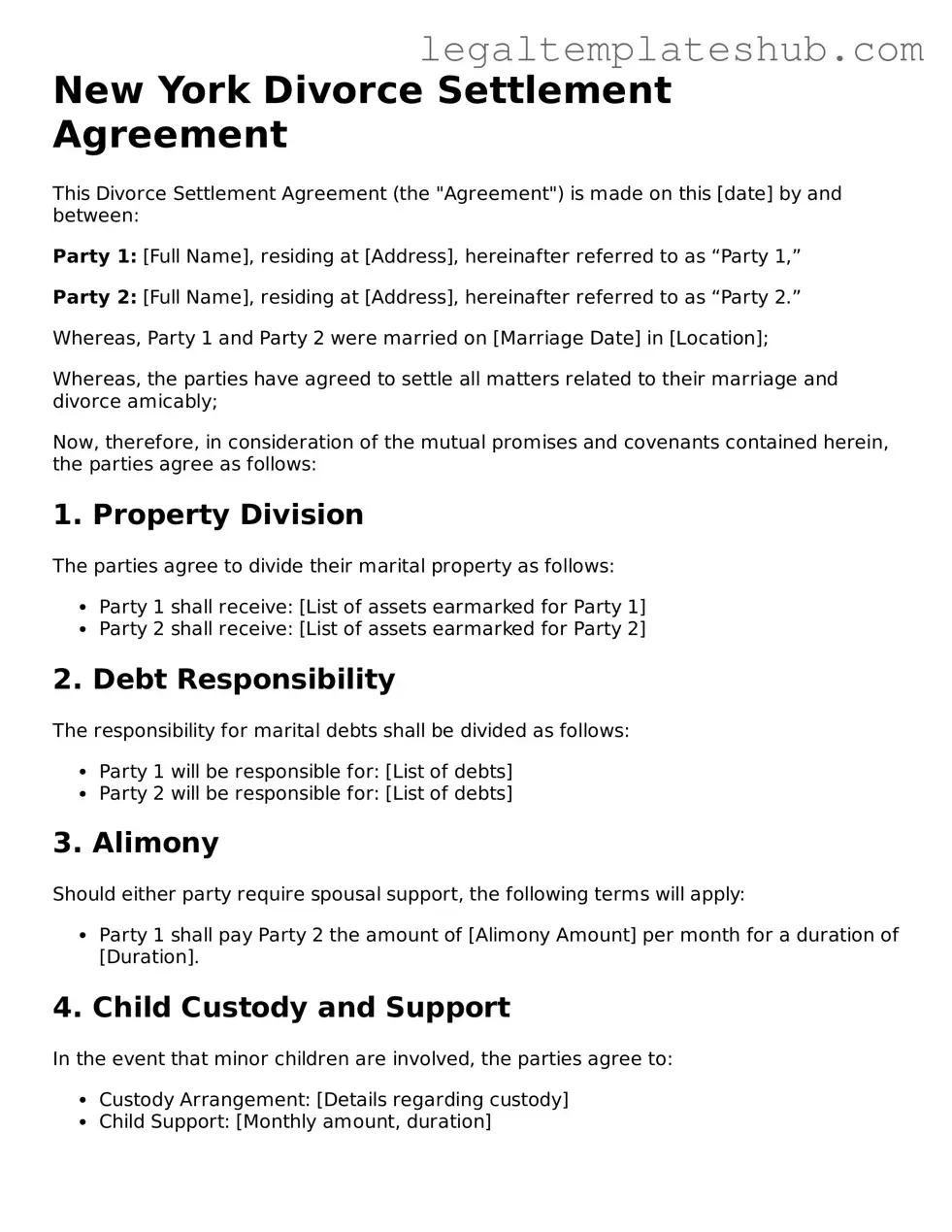Printable Divorce Settlement Agreement Document for New York
The New York Divorce Settlement Agreement form is a legal document that outlines the terms and conditions agreed upon by both parties during a divorce. This form addresses various aspects such as asset division, child custody, and support obligations. Completing this form accurately is essential for a smooth divorce process; fill it out by clicking the button below.
Access Editor
